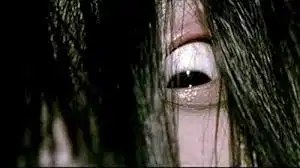Cult Japanese Horrors That You Shouldn’t Watch Alone

For decades we had the privilege to watch horror films from a safe distance. There’s always been an invisible line that successfully separated our reality from the terrors happening on the screen. This allowed us to watch the most horrifying things happening on the screen and then go back to our reality. Slightly scared, but without the constant need to check the dark corners of the bedroom. And then the J-horror films reached mass audiences in the west, and everything changed.
In 1998 a Japanese horror film was causing a severe scare not just among the general audience but also among the devoted fans of the horror genre. There were no gory or unimaginably brutal scenes, but it made people undoubtedly scared. Director Nakata Hideo set completely new standards when it comes to horror films.
Ringu (1998) begins as a Japanese reporter Reiko Asakawa (Nanako Matsushima) works on a story about three teenagers dying mysteriously. Each one of them was discovered with a disturbing expression of fear on their face. There were no signs of violence, drug abuse, or any other explainable reason for their death. They all looked like they deceased of fear which mystified everyone working on the case. The only thing connecting them is the mysterious VHS tape that they all watched in the cabin where they stayed. The cursed tape will kill the viewer seven days after watching it. Reiko manages to find the video and decides to play it.
The mix of different scenes we see on the screen makes us feel rather uncomfortable, at least. There is nothing scary in them, and jet we feel unease as we watch them, same as Reiko. We are no longer outsiders watching the film from a safe distance. As we watch the VHS tape together with the main character, we also become protagonists of the movie. By the time Reiko, and the audience, realize what is happening, Sadako comes out of the screen, and the magical barrier between the imaginary world of film and reality is forever erased.
Sadako, the legendary character that came out of our darkest nightmares, was played by kabuki actress Rie Ino. To achieve her characteristic movement that sends chills down the spine, the film director shot the actress while moving backward and then reversed the footage. This gave the entire character an entirely new layer of creepiness and material that fueled the audience's night terrors for decades.
Director Nakata Hideo returns to the genre in 2002 with the film Dark Water. The story begins slowly, and the scare builds up as the film progresses. The eerie atmosphere goes perfectly well with the plot that explores abandonment, loss, mental health and parental guilt.
Yoshimi (Kuroki Hitomi) is going through a messy divorce and custody battle over her six-year-old daughter. Not having much money, the mother and daughter are forced to move into an old apartment building. As they both struggle to adjust to the new reality, Yoshimi starts seeing visions of a young girl. She soon learns about the tragedy that happened in the building and starts to believe that the things she sees might be real after all.
One of the main reasons this horror subgenre became so popular globally is the way the stories are told. The plot unfolds slowly throughout the entire film and the audience usually has the exact moment of revelation as the main character. Not being able to predict what is happening on the screen amplifies the scare effect of these movies.
Quickly after gaining global popularity, J-horror movies started getting their Hollywood remakes. With the exception of The Ring, most new versions received poor reviews from both critics and the audience. If you never before saw the Japanese originals or you are up for some good scare, now is the time. You can stream Ringu and Dark Water on w4free. Just make sure that you have hallway lights on and that there is no leaky faucet in the house.
